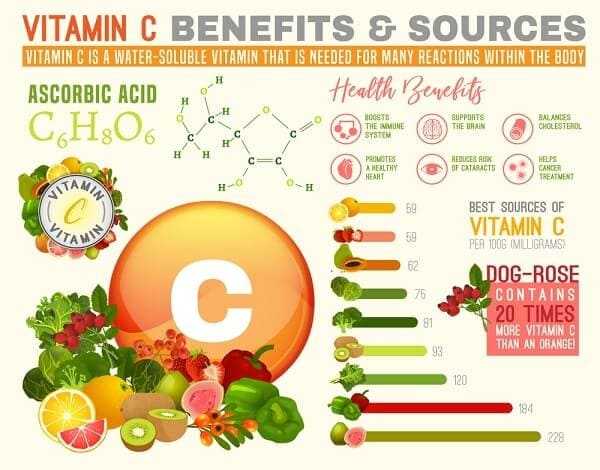Vitamins for Back pain

Vitamin E
Vitamin E is a fat-soluble vitamin, whose main function is that of an anti-oxidant. Vitamin E is a constituent of every cell membrane, where it helps to stabilize the structure of the cell and protect it from free radicals. Vitamin E has a variety of other functions, including enhancement of the immune system. Of importance to arthritis is the role it plays in cartilage as it appears to inhibit the breakdown of cartilage and stimulate the growth and production of new cartilage cells (chondrocytes).
Vitamin E is available in different forms, either natural or synthetic. The natural forms are d-alphatocopherols and the synthetic versions are the dl-alpha-tocopherols. It has been shown through several studies that the natural version has a greater absorption and biologic activity than the synthetic version.

Side Effects: Because vitamin E is fat soluble, it can build up in the tissues if the dose is too high. This generally does not occur unless individuals are chronically taking more than 1600 IU per day. Vitamin E also has blood-thinning properties. It should not be combined with any other anticoagulants, such as warfarin (coumadin), heparin, aspirin, or vitamin K. In addition, this vitamin should be stopped 10 to 14 days prior to any surgery. As with all medicines, let your doctor know if you are taking it.
Vitamin E Facts
Vitamin E It is an essential vitamin for fat metabolism and may help with recovery from nerve inflammation such as occurs in sciatica.
Back Care Use
- Helps prevent further degradation of cartilage and promotes repair of cartilage.
- Stimulates the growth of chondrocytes (cartilage cells).
Dose
400 IU per day. It can safely be increased to 800 IU per day (the usual dose for hot flashes). However, as an anti-oxidant, 400 IU is sufficient, particularly if it is combined with vitamin C because they have a synergistic effect.
Vitamin C
Vitamin C or ascorbic acid is a water-soluble vitamin. Vitamin C was first isolated in the late 1920s for the treatment of scurvy. New roles for this important vitamin continue to be found. Vitamin C is an important free-radical scavenger in the body. Free radicals are known to mediate some of the damage and inflammation in arthritis. Blood levels of vitamin C are reduced below normal in patients with rheumatoid arthritis and levels within joint fluid are even lower.
Vitamin C increases the binding together of amino acids to help support the structure of the collagen, an important structural component of cartilage. These amino acids are proline and hydroxyproline. Vitamin C has also been shown to increase the production of proteoglycans, also structurally important molecules in cartilage. Several studies have been performed supporting this. One such study evaluated guinea pigs with osteoarthritis. Cartilage erosion was decreased when the pigs were given high doses of vitamin C.

Side Effects: When vitamin C is taken in too high of a dose, loose stools or diarrhea results. Otherwise, there are no adverse reactions with vitamin C.
Vitamin C Facts
Vitamin C does appear to have a potential role in the treatment of back pain and arthritis, primarily in helping to build and repair collagen.
Back Care Use
- Decreases free radical oxidative inflammation and pain.
- Increases collagen repair by stimulating the production of structural proteoglycans.
Dose
The dose for vitamin C is under continual dispute. Some experts, such as Linus Pauling, the Nobel Prize winner, recommend 2-9 g per day, taking the vitamin until bowel tolerance (loose bowels) is reached. However, the recommended daily allowance for vitamin C is 60 mg. One end is too high and the other is too low. A good general dose is approximately 500 mg per day.
Vitamin B Complex
The B vitamin complex is a group of structurally similar but not identical compounds. B vitamins are used in many different areas of the body, including nerves, muscles, liver, skin, and brain. They are involved in many co-enzyme reactions (helping an enzyme reaction take place) and thus are crucial to the function of the body. There are several different B vitamins, and although they are often supplemented together and do have similar actions, some of the B vitamins have unique properties. For this reason, we have broken down each B vitamin separately.
Studies out of Japan show that B vitamins supplementation enhanced not only overall nerve health, but also helped repair existing nerve damage and increased the efficacy of nerve signaling throughout the body. In addition, German scientists found that B vitamins were very beneficial in the relief of nerve pain. This effect can be seen as early as 8 weeks following supplementation. Their role in treating chronic pain includes improved energy, reduction of stress, and resistance to depression.
Vitamin B Complex Facts
The B-group of vitamins provides a number of vital functions in the body with direct impact on the spine, its nerves, and brain function. It is recommended particularly in sciatica and stenosis where nerve injury or inflammation occurs.
Vitamin B-l (Thiamin)
Vitamin B-l or thiamin is a water-soluble vitamin. It is a constituent of an enzyme called thiamin pyrophosphate and is required for oxidative decarboxylation of alpha-keto acids. This aids the body by releasing energy from the carbohydrates more quickly. Thus fewer carbohydrates are needed and consumed and a stable blood sugar level is maintained more easily. What this actually means is that vitamin B-l helps to breakdown carbohydrates creating energy. It also has a specific role aiding nerve cell function. Thiamin is crucial in helping transmit a particular nerve impulse along a nerve fiber and in repairing nerves. Vitamin B-l is also important for brain function and memory. B-l helps to increase the production of neurotransmitters or brain chemical messengers. It has been shown to mimic the important neurotransmitter acetylcholine, thereby increasing the overall function of the brain.

Safety: No toxicity levels have been seen with Bl. Magnesium increases the efficacy of Bl by helping to convert thiamin into its more active form. Alcohol, diuretics, and dilantin have been shown to decrease the effect of thiamin on the body.
Dose
The dose for vitamin C is under continual dispute. Some experts, such as Linus Pauling, the Nobel Prize winner, recommend 2-9 g per day, taking the vitamin until bowel tolerance (loose bowels) is reached. However, the recommended daily allowance for vitamin C is 60 mg. One end is too high and the other is too low. A good general dose is approximately 500 mg per day.
Vitamin B-1 Facts
Back Care Use
- Increases nerve impulses along the nerve fibers to help maximize nervous transmission.
- Helps to repair damaged nerve fibers.
Dose
50-100 mg per day.
Vitamin B-2 (Riboflavin)
Vitamin B-2, also known as riboflavin, is also a water-soluble vitamin. Riboflavin is the vitamin that is responsible for the florescent yellow color of your urine upon ingestion of a B complex vitamin or a multivitamin with B vitamins included. Riboflavin is necessary for the growth and repair of the insulating coat around a nerve known as the myelin sheath. Without B-2, this myelin sheath is more prone to injury and inflammation and recovery from insult is impaired.

In addition, B-2 is also required for the production of energy and the burning of fat as it helps to increase mitochondrial output. Mitochondria are the components in muscle that are responsible for breaking down fat and generating both heat and energy, so this vitamin is important in weight regulation. Mitochondrial output also appears to affect migraine development. Clinical studies show significant benefit to migraine sufferers through B-2 supplementation.
Apart from these metabolic benefits, vitamin B-2 is also involved in recycling glutathione, the main free radical scavenger in the body. Free radicals mediate the cell damage caused by ingested and environmental toxins. Glutathione and other molecules mop up these free radicals and protect us from damaging pollutants. Low levels of riboflavin have been associated with certain cancers, especially esophageal cancer.
Safety: No toxicity has been seen with B-2. No interactions have been seen with riboflavin and other vitamins or minerals or pharmaceutical drugs.
Vitamin B-2 Facts
Back Care Use
- Helps with the growth and repair of the myelin sheath (insulating coating around the nerve).
- Decreases inflammation by increasing the production of the free radical scavenger glutathione.
Dose
50-100 mg per day.
Vitamin B-3 (Naicin)
Vitamin B-3 or niacin is used in the maintenance of blood sugar levels, in detoxification, and in the production of energy. It functions as part of two enzymes, NAD (nicotinamide adenine di-nucleotide) and NADP (nicotinaminde adenine dinucleotide phosphate). These enzymes are part of the glycogen cycle, in which glucose and fatty acids are oxidized into energy. Thus B-3 or niacin is used in the production of energy from our food. As we have seen previously, unstable glucose levels and energy production can alter both the function and health of the nerves.

B-3 has also been shown to help regulate the general enzymatic control of the nervous system, thereby aiding in transmission of particular messages, and in repair of damaged nervous tissue.
Niacin has been used to help lower LDL, the bad cholesterol and other lipoproteins in the blood. Its effects are also quite long lasting, and studies show that niacin actually can provide better overall results as compared to meds such as lovastatin.
Safety: Liver toxicity may be a side effect of too much B-3, but this has been seen only in doses ranging from 2-6 grams per day. The most common side effect is skin flushing or heat rash and nausea. In order to decrease this side effect, a time- released B-vitamin complex is now available. Another version of niacin exists, known as niacinamide, which is a nonflushing version of niacin with no effects on the liver when used in appropriate doses.
Vitamin B-3 Facts
Back Care Use
- Helps to regulate the entire nervous system aiding in nerve repair, transmission, and growth.
- Helps to increase the formation of ATP energy from food, supplying more fuel to the body for repair.
Dose
30-80 mg per day.
Vitamin B-6 (Pyridoxine)
Vitamin B-6 or pyridoxine, like the other B vitamins, is a water-soluble vitamin. This vitamin has been studied extensively and is now considered one of the most important vitamins available. It is utilized in many different bodily processes, including the production of hemoglobin, cellular turnover, and all new protein manufacture. For this reason, B-6 is very important in pregnancy, nervous system function, immune regulation, and skin and mucous membrane turnover. B-6 also been shown to help in the control of diabetes and plays an integral role in the function of the immune system. A deficiency in B-6 results in decreased production of antibodies and immune cells such as lymphocytes.

Vitamin B-6 also greatly helps with stress, anxiety, and depression, which can greatly aggravate any type of back pain. Vitamin B-6 helps to regulate nerve conduction and combats depression, as it is necessary for the production of serotonin, our body’s ‘happy’ hormone. For this reason, vitamin B-6 is known as the anti-stress vitamin or anti-depression vitamin, used extensively in both depression and pre-menstrual syndrome.
B-6 goes into the production of serotonin and GABA, the neurotransmitters involved in preventing depression and stress and promoting relaxation. In addition to the effects directly on the stress receptors, B-6 helps relieve anxiety and depression, particularly in women with high estrogen or on the birth control pill. Estrogen depletes vitamin B-6 in the body. Women who take the birth control pill or hormone replacement therapy have increased circulating levels of estrogen and therefore lower levels of B-6. Studies carried out over a 15-year period across several different countries reveal that increased estrogen leads to increased excretion of B-6 and subsequent depression, decreased libido, decreased glucose tolerance, and anxiety. Administration of only 40 mg per day of vitamin B-6 restores the biochemical values back to normal and relieves the associated psychological symptoms.
Safety: Vitamin B-6 has been shown to express signs of toxicity when taken in large quantities and over long periods of time. Ironically, toxic symptoms include nerve damage and loss of muscle coordination. This is seen at levels higher than 2 g per day.
Vitamin B-6 Facts
Back Care Use
- Helps to decrease glycosylation of proteins that causes nerve damage.
- Decreases stress and stress related pain by increasing the production of serotonin and GABA.
Dose
50-100 mg per day.
Vitamin B-12 (Cyanocobalamin)
Vitamin B-12, also known as cyanocobalamin, functions primarily as a coenzyme. Vital for production of new DNA, it is essential for the growth of all new cells but particularly those involved with the blood, immune, and nervous systems. B-12 is therefore is an integral part of any therapeutic program involving these areas. B-12 is also important for lowering homocysteine levels in the blood. Homocysteine is an independent risk factor in heart disease, and when elevated, greatly increases the risk of stroke.

Deficiency of B-12 can lead to anaemia (Pernicious anaemia ) and is associated with gastric upset and peripheral nerve dysfunction. Spinal cord involvement results in impaired sensation and movement disorder. B-12 is essential for brain function, acting as a methyl donor to many compounds in the body and is thus involved in neurotransmitter production. This is one of the methods of nerve damage repair, making B-12 essential to health and function of the entire nervous system.
Safety: No toxicity levels have been seen with B-12. B-12 is intimately linked to folic acid such that a deficiency in one will lead to a deficiency in the other. Treatment is usually combined.
Vitamin B-12 Facts
Back Care Use
- Essential for the production of all DNA and cellular growth and repair.
- Donates methyl groups used as a substrate for nerve repair.
Dose
50-100 meg per day.




